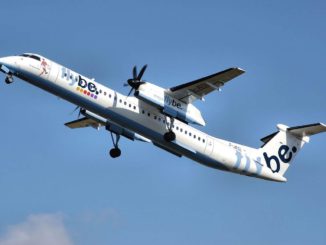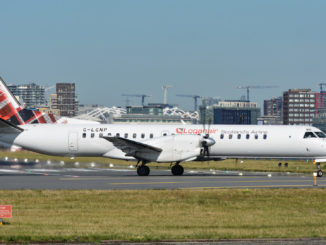
Leading regional airline Loganair (LM/LOG) has joined forces with the Met Office and FLYHT to carry out revolutionary sustainable aviation research to reduce the environmental impact of flying.
The partnership will work together to improve the accuracy of aviation weather forecasts and reduce flight emissions by operating flights in the most efficient way taking into account environmental factors.
The project will see all 13 of Loganair’s Embraer 145 regional jets fitted with cutting-edge FLYHT-WVSS-II atmospheric water vapour sensors to measure weather data which will then be used by the Met Office and to better understand the non-CO2* effects of aviation.
Loganair chief executive Jonathan Hinkles said: “Loganair is resolutely committed to achieving Net Zero emissions by 2040 and this partnership signifies our dedication to confronting the environmental challenges posed by aviation head-on.
“Rather than evading the issue, we are taking the lead in pioneering solutions. We’ve taken great strides already through carbon offsetting and our GreenSkies initiative. However, this partnership will take our efforts to the next level, helping us to understand and tackle the non-CO2 effects of flying, which account for almost half of aviation’s environmental impact.
“It’s a first-of-its-kind initiative of this scale in the United Kingdom, setting a new standard for comprehensive weather data collection.
“As the project progresses, we anticipate groundbreaking insights into weather patterns, contrail formation, and their cumulative effects on the environment. Equipped with this knowledge, Loganair is poised to drive further transformative change within the industry and continue to set an example for sustainable aviation practices that others can follow.”
The data provided by FLYHT’s systems will help the Met Office to better predict extreme weather events and improve local forecasting of conditions such as thunderstorms, fog, and showers.
Adverse weather presents one of the biggest challenges for aircraft operations and better weather observations will greatly improve weather-based flight planning and real-time updates, enabling more efficient avoidance of severe weather and turbulence.
*Aircraft engines emit gases including nitrous oxides (NOx), sulfur dioxide (SO2) and water (H2O) – and particulate matter (soot). When emitted at high altitudes, these emissions affect atmospheric physical and chemical properties.




Be the first to comment